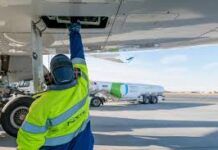The computer industry has always wondered about where the next “killer app” — or application — would come from to help stimulate demand for new hardware. Basic word processing was one of the first, followed quickly by Lotus 1-2-3’s number-crunching ability, database managers, the Internet, e-mail and the World Wide Web. Other industries, including aviation, are also looking for the next killer app, some product or service that opens up new markets or greatly enhances utility, efficiency or both. Recent examples include color GPS moving-map avionics, fractional-ownership operations and the emerging light-light business jet epitomized by Eclipse Aviation’s Eclipse 500 and the Cessna Mustang. One recent development — synthetic vision — has the potential to make wholesale improvements in general and business aviation. Most recently, NASA and Gulfstream Aerospace have teamed up to conduct research into synthetic vision designed to improve a pilots situational awareness, resulting in reduced incidents of controlled flight into terrain (CFIT) and runway incursions.
According to Gulfstream, one of the company’s GV business jets recently flew a research flight with NASAs experimental Synthetic Vision System (SVS) to evaluate the benefits and issues surrounding synthetic vision as well as the effectiveness of various synthetic vision presentations to the pilot. NASAs findings will assist the aviation industry with the creation of new advanced vision products. The NASA SVS uses a combination of Head-up (HUD) and Head-down displays, an advanced multi-scan weather radar, advanced sensors, a voice-recognition system and cockpit displays with computer-generated images of the terrain to assist pilots with approaches. A Runway Incursion Prevention System (RIPS) also is being tested and evaluated aboard the GV. The NASA research is similar to that engaged in by Gulfstream leading to FAA certification of the company’s Enhanced Vision System (EVS), now available to customers. Earlier this year, Gulfstream obtained FAA approval for operators to use EVS and similar vision systems to operate aircraft below decision height, decision altitude or minimum descent altitude to determine flight visibility. The GV will continue flight testing at NASA’s Wallops Island facility through the beginning of July. During this phase of the flight-testing program, NASA will fine-tune the RIPS and SVS in preparation for the second phase, which begins in mid-July in Reno, Nev. During the second phase, the GV will fly with evaluation pilots in a more challenging environment that includes mountain ranges and tall buildings. NASA and Gulfstream expect to complete all flight testing by the end of August.
































